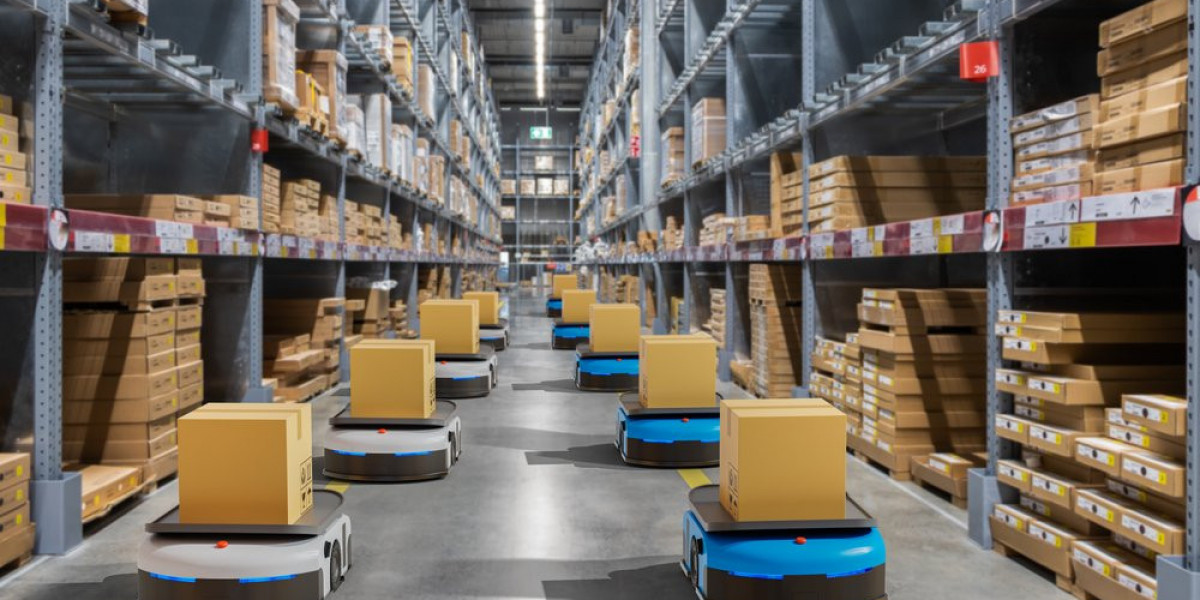The Autonomous Mobile Robots (AMR) market has rapidly expanded in recent years, driven by increasing automation in industries such as manufacturing, logistics, healthcare, and e-commerce. These robots offer greater flexibility and efficiency than traditional automated guided vehicles (AGVs), operating without fixed paths or tracks. However, as the AMR industry matures, it faces a variety of threats that could impact its continued growth and adoption. This analysis outlines key threats to the AMR market, covering technical, regulatory, economic, and competitive aspects.
1. Cybersecurity and Data Vulnerability
One of the most pressing threats to the AMR market is cybersecurity. AMRs rely heavily on real-time data collection, cloud connectivity, and autonomous decision-making algorithms, all of which are vulnerable to cyberattacks. A breach could allow malicious actors to take control of robots, disrupt operations, or steal sensitive industrial data. As AMRs become more embedded in critical infrastructure, the consequences of security lapses become more severe, potentially undermining customer trust and regulatory compliance.
2. High Initial Costs and ROI Challenges
Despite long-term cost benefits, the initial investment required for AMRs—including purchase, integration, and infrastructure upgrades—can be prohibitively expensive for many small to mid-sized enterprises. Calculating a clear return on investment (ROI) can be difficult, particularly in uncertain economic climates. These financial hurdles limit broader market penetration, especially in regions or sectors with limited access to capital.
3. Regulatory and Compliance Barriers
The lack of standardized regulations across different countries and industries poses a significant obstacle for AMR deployment. Without harmonized safety and performance standards, manufacturers must customize solutions to meet diverse regional requirements, increasing development costs and time-to-market. Additionally, workplace safety regulations may not yet fully account for autonomous systems, leading to delays in approvals or liability issues in the event of accidents.
4. Integration Complexity and Legacy Infrastructure
Integrating AMRs into existing operations is not always seamless. Many facilities still rely on outdated systems or legacy infrastructure not designed to interface with modern autonomous platforms. This misalignment can result in technical incompatibilities, delays, or the need for expensive retrofitting. Moreover, ensuring that AMRs work in concert with human workers and other robotic systems often requires advanced software and significant customization.
5. Skill Gaps and Workforce Resistance
The successful deployment and management of AMRs require a skilled workforce capable of handling robotics, AI, and data analytics. However, many companies face challenges in recruiting and retaining talent with such expertise. Additionally, workers may resist AMR adoption due to fears of job displacement. Labor unions and other advocacy groups may push back against widespread deployment, creating social and political friction that slows market growth.
6. Rapid Technological Evolution
The pace of innovation in robotics and artificial intelligence can be both a boon and a threat. Rapid technological shifts may render existing AMR models obsolete in a short time frame, disincentivizing investment. Companies may delay purchases out of concern that newer, more capable robots will soon replace current offerings. This “wait-and-see” approach can dampen market momentum, particularly among early adopters.
7. Supply Chain Disruptions and Component Shortages
AMRs rely on complex supply chains for critical components such as sensors, semiconductors, batteries, and motors. Global supply chain disruptions—triggered by pandemics, geopolitical tensions, or trade restrictions—can delay manufacturing and delivery timelines. A shortage in any key component can cascade across the production cycle, limiting availability and increasing prices.
8. Intense Market Competition and Fragmentation
The AMR market is attracting a growing number of players, ranging from established robotics firms to new startups and large tech companies. While this fosters innovation, it also leads to market fragmentation, with varying standards, platforms, and ecosystems. Such diversity makes interoperability difficult, increasing barriers for customers who wish to scale operations across multiple vendors or facilities.
9. Environmental and Ethical Concerns
As sustainability becomes a global priority, AMRs must align with environmental goals. Battery disposal, energy consumption, and the use of rare earth materials are areas of concern. Additionally, the ethical implications of autonomous decision-making—especially in sectors like healthcare or public services—may attract scrutiny. Companies that fail to address these concerns may face public backlash or legal challenges.
10. Customer Expectations and Overpromising
Overpromising on the capabilities of AMRs can lead to disappointment and damaged reputations. If customers adopt robots based on inflated marketing claims and fail to see tangible performance improvements, this can create skepticism about the technology as a whole. Managing customer expectations with realistic use cases and deployment timelines is crucial to long-term market stability.
In conclusion, while the Autonomous Mobile Robots market holds substantial promise, it also faces a range of significant threats that must be strategically managed. Companies operating in this space need to invest in security, navigate regulatory complexity, and focus on long-term value delivery while addressing integration, workforce, and supply chain challenges. Only through proactive risk mitigation and transparent innovation can the AMR industry sustain its momentum and fulfill its transformative potential across global industries.
read more:
| https://www.pristinemarketinsights.com/autonomous-mobile-robots-market-report |









